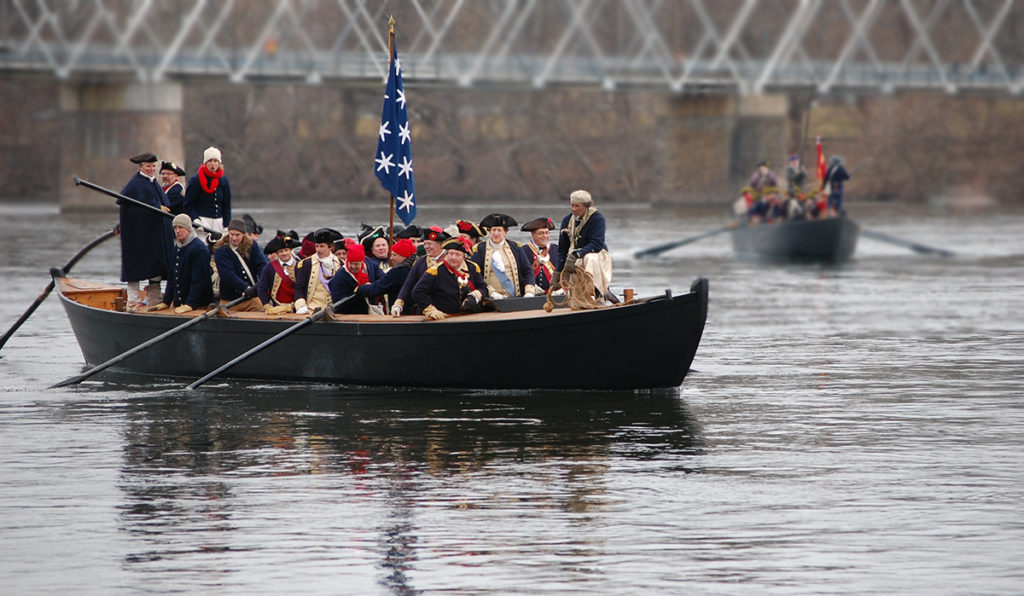
Considering the piecemeal recordkeeping of the time and general chaos that often surrounds war’s most intense moments, it’s astonishing that we know as much as we do about the Ten Crucial Days, the pivotal period surrounding the crossing. However, there are a few central facts that are frequently misconstrued to this day.
The crossing began on Christmas Eve.
The first involves the date of the crossing itself.
“There were some references in the early 19th century that describe it as taking place on the ‘eve’ of Christmas, which modern readers could, and have, misinterpreted to mean Christmas Eve, when, in fact, it means Christmas night,” says museum curator Kimberly McCarty.
The crossing began during the night of December 25, 1776 and continued into the early morning hours of Dec. 26.
Only Durham boats were used for the crossing.
It was not carried out exclusively with Durham boats, as is sometimes thought.
“Washington specifically asked, earlier that December, for Durham boats to be collected because he knew they were capable of hauling cargo, which would also make them capable of carrying large quantities of soldiers,” McCarty says. “But the reality is that untold numbers of various vessels had been collected and used for the crossing.”
The Hessian troops were drunk during the first Battle of Trenton.
McCarty says that one of the most common misconceptions she’s encountered about the Ten Crucial Days is the belief that the Hessian troops were intoxicated when Washington and a Continental Army force of more than 2,000 soldiers attacked Trenton on Dec. 26. It was the patriots’ first significant victory of the Revolutionary War to date.
“I think part of it is borne out of some disparaging early references to Hessian Colonel Johan Rall as a drunkard,” she says. “There’s also a belief that the Americans were capable of winning only if the Hessians were drunk. The truth is, they were exhausted. At the time of the battle, they were sleeping in their uniforms. They had to always be at the ready because the local militias were constantly attacking their outposts.
“They also had every reason to believe they wouldn’t be attacked,” McCarty continues. “It was the day after Christmas, a religious holiday. And there was the winter storm. It was rational for them to think they weren’t going to encounter any trouble that day. Frankly, that’s the beauty of the sneak attack.”
The war effectively ended with the Ten Crucial Days.
Finally, while the Ten Crucial Days, collectively, represent a significant turning point for the Continental Army, it, by no means, ended the war. In fact, the war dragged on for another six-and-a-half years.
“And there were many times during that period when the outcome looked bleak for the patriot cause,” McCarty says. “What this campaign did do was end the assumption by the British that this revolt could be put down quickly. It also allowed Washington and his troops to make it to another season.”

